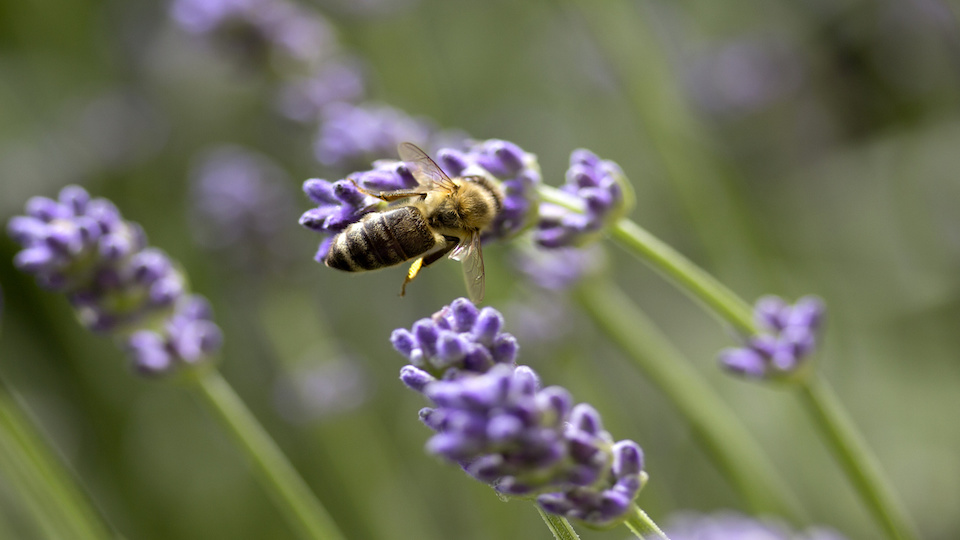When you think of bees, it probably isn’t your first instinct to want to attract more of them to your yard. These striped insects often get a bad rap due to their rather painful natural defense mechanism and are often shoed away from the garden by harsh insect repellents and pesticides.
Unfortunately, this negative outlook on bees and the rise of industrial farming along with the increased pace of urbanization has caused bees to disappear at an alarming rate. This disappearance is a concern for many reasons, namely the continued pollination of the fruit and vegetable crops of the worldwide food supply. Bees play an essential role in pollination, and without them, the world could be facing an agricultural crisis.
So what can you do?
Creating a welcoming garden for the bees, raising awareness of their importance to the ecosystem, and discontinuing the use of harmful chemicals in your yard are a few simple ways that you can make a difference. These 7 flowers are especially attractive to bees and can make your garden a paradise for these beneficial insects.
Catmint
Along with being incredibly hardy and easy to grow, catmint has beautiful purple flowers during its blooming season and lovely silvery-green foliage the rest of the year. Be sure to contain catmint in a pot or plant it somewhere that you don’t mind it spreading.
Bee balm
As the name would suggest, bees and other pollinators such as butterflies love this vibrant plant. It also provides a wonderful fragrance and an eye-catching pop of color for your garden.
Foxglove
If you are looking for a flower to add a bit of height to the back of your garden, foxglove is a great choice. It does well when planted in moist, shady conditions which means that it will flourish under an overhang against the side of your house or under a tree.
Anise hyssop
Another vertical wonder, anise hyssop produces tall shoots with lots of flowers that allow bees and butterflies to congregate. Deadheading the spent flowers will encourage more blossoms later in the season. Plus, the leaves have a wonderful anise scent when disturbed.
Crocus
Often the tiny crocus blooms are the first hint that spring is on the horizon, sometimes even popping up when there’s still a dusting of snow on the ground. When planted in clusters, these flowers make an appealing target for all types of bees and give your eager flying friends a dose of nectar when other plants haven’t begun to bloom.
Calendula
If you live in an area with cooler temperatures, calendula or “pot marigold” as it is sometimes referred to, could be an excellent addition to your garden. Bees love this yellow plant, and since it reseeds, it will be a source of beauty and bee sustenance for years to come.
Lavender
Plant lavender in areas with well-drained soil and full sun. Not only is this fragrant herb an alluring bee attraction, but it can also be used in many ways in the kitchen and aromatherapy. Even better, deer and rabbits tend to leave lavender alone which is essential if you’ve had a problem with these destructive guests in the past.
Tips for choosing flowers that attract bees
Of course, this list is far from exhaustive and there is a myriad of other plants that bees love. Here are a few guidelines to keep in mind as you cultivate your bee-friendly garden.
Fragrant blooms
Many of the flowers on the list above are distinctly known for their delightful scent. There is a reason for that! Bees are strongly attracted to the sweet scent of flowers and will frequent your garden more often if it is home to delightful natural perfume.
Bright Flowers
Pigmentation in flower is solely to attract pollinators. Be sure to plant bright flowers in your garden, especially shades of yellow, white, blue, and purple.
Native plants
Do some research and discover which plants are native to your region. Planting native flowers draws in local bees and helps encourage them to stay in the area.
Early spring flowers
Coming out of winter, it is essential that bees have a good food supply. Be sure to fill your garden with plants that flower all season, starting as early as possible. Plus, this will allow you to enjoy a colorful garden for longer.
Do you know of any other flowers that bees go crazy for? Let us know in the comments below!
-Taylor Ramsey




